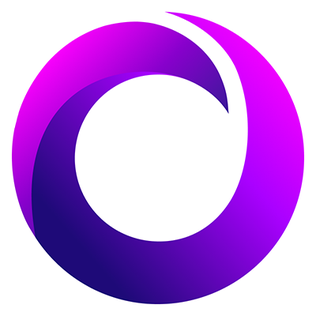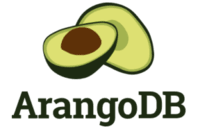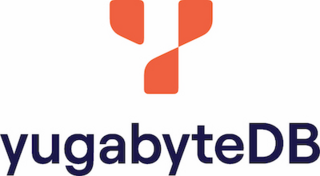
In computing, a database is an organized collection of data or a type of data store based on the use of a database management system (DBMS), the software that interacts with end users, applications, and the database itself to capture and analyze the data. The DBMS additionally encompasses the core facilities provided to administer the database. The sum total of the database, the DBMS and the associated applications can be referred to as a database system. Often the term "database" is also used loosely to refer to any of the DBMS, the database system or an application associated with the database.

MySQL is an open-source relational database management system (RDBMS). Its name is a combination of "My", the name of co-founder Michael Widenius's daughter My, and "SQL", the acronym for Structured Query Language. A relational database organizes data into one or more data tables in which data may be related to each other; these relations help structure the data. SQL is a language that programmers use to create, modify and extract data from the relational database, as well as control user access to the database. In addition to relational databases and SQL, an RDBMS like MySQL works with an operating system to implement a relational database in a computer's storage system, manages users, allows for network access and facilitates testing database integrity and creation of backups.

PostgreSQL, also known as Postgres, is a free and open-source relational database management system (RDBMS) emphasizing extensibility and SQL compliance. PostgreSQL features transactions with atomicity, consistency, isolation, durability (ACID) properties, automatically updatable views, materialized views, triggers, foreign keys, and stored procedures. It is supported on all major operating systems, including Linux, FreeBSD, OpenBSD, macOS, and Windows, and handles a range of workloads from single machines to data warehouses or web services with many concurrent users.

Db2 is a family of data management products, including database servers, developed by IBM. It initially supported the relational model, but was extended to support object–relational features and non-relational structures like JSON and XML. The brand name was originally styled as DB/2, then DB2 until 2017 and finally changed to its present form.
MySQL Cluster is a technology providing shared-nothing clustering and auto-sharding for the MySQL database management system. It is designed to provide high availability and high throughput with low latency, while allowing for near linear scalability. MySQL Cluster is implemented through the NDB or NDBCLUSTER storage engine for MySQL.
Bigtable is a fully managed wide-column and key-value NoSQL database service for large analytical and operational workloads as part of the Google Cloud portfolio.
A database shard, or simply a shard, is a horizontal partition of data in a database or search engine. Each shard is held on a separate database server instance, to spread load.
MongoDB is a source-available, cross-platform, document-oriented database program. Classified as a NoSQL database product, MongoDB utilizes JSON-like documents with optional schemas. MongoDB is developed by MongoDB Inc. and current versions are licensed under the Server Side Public License (SSPL). MongoDB is a member of the MACH Alliance.
A cloud database is a database that typically runs on a cloud computing platform and access to the database is provided as-a-service. There are two common deployment models: users can run databases on the cloud independently, using a virtual machine image, or they can purchase access to a database service, maintained by a cloud database provider. Of the databases available on the cloud, some are SQL-based and some use a NoSQL data model.
eXtremeDB is a high-performance, low-latency, ACID-compliant embedded database management system using an in-memory database system (IMDS) architecture and designed to be linked into C/C++ based programs. It works on Windows, Linux, and other real-time and embedded operating systems.

SingleStore is a proprietary, cloud-native database designed for data-intensive applications. A distributed, relational, SQL database management system (RDBMS) that features ANSI SQL support, it is known for speed in data ingest, transaction processing, and query processing.

Oracle NoSQL Database is a NoSQL-type distributed key-value database from Oracle Corporation. It provides transactional semantics for data manipulation, horizontal scalability, and simple administration and monitoring.
NewSQL is a class of relational database management systems that seek to provide the scalability of NoSQL systems for online transaction processing (OLTP) workloads while maintaining the ACID guarantees of a traditional database system.
SequoiaDB is a multi-model NewSQL database.
The following outline is provided as an overview of and topical guide to MySQL:

ArangoDB is a graph database system developed by ArangoDB Inc. ArangoDB is a multi-model database system since it supports three data models with one database core and a unified query language AQL. AQL is mainly a declarative language and allows the combination of different data access patterns in a single query.

ClickHouse is an open-source column-oriented DBMS for online analytical processing (OLAP) that allows users to generate analytical reports using SQL queries in real-time. ClickHouse Inc. is headquartered in the San Francisco Bay Area with the subsidiary, ClickHouse B.V., based in Amsterdam, Netherlands.
A distributed SQL database is a single relational database which replicates data across multiple servers. Distributed SQL databases are strongly consistent and most support consistency across racks, data centers, and wide area networks including cloud availability zones and cloud geographic zones. Distributed SQL databases typically use the Paxos or Raft algorithms to achieve consensus across multiple nodes.

YugabyteDB is a high-performance transactional distributed SQL database for cloud-native applications, developed by Yugabyte.
RavenDB is an open-source fully ACID document-oriented database written in C#, developed by Hibernating Rhinos Ltd. It is cross-platform, supported on Windows, Linux, and Mac OS. RavenDB stores data as JSON documents and can be deployed in distributed clusters with master-master replication.








